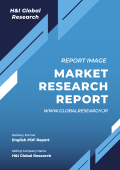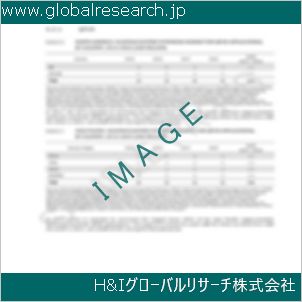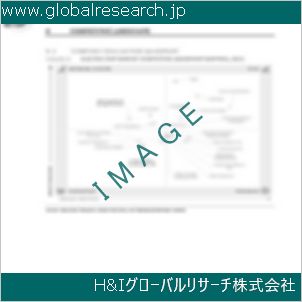1 Automotive LNG Cylinders Market Overview
1.1 Product Definition
1.2 Automotive LNG Cylinders Segment by Type
1.2.1 Global Automotive LNG Cylinders Market Value Growth Rate Analysis by Type 2022 VS 2029
1.2.2 Metals
1.2.3 Glass Fiber
1.2.4 Others
1.3 Automotive LNG Cylinders Segment by Application
1.3.1 Global Automotive LNG Cylinders Market Value Growth Rate Analysis by Application: 2022 VS 2029
1.3.2 Passenger Car
1.3.3 Commercial Vehicle
1.4 Global Market Growth Prospects
1.4.1 Global Automotive LNG Cylinders Production Value Estimates and Forecasts (2018-2029)
1.4.2 Global Automotive LNG Cylinders Production Capacity Estimates and Forecasts (2018-2029)
1.4.3 Global Automotive LNG Cylinders Production Estimates and Forecasts (2018-2029)
1.4.4 Global Automotive LNG Cylinders Market Average Price Estimates and Forecasts (2018-2029)
1.5 Assumptions and Limitations
2 Market Competition by Manufacturers
2.1 Global Automotive LNG Cylinders Production Market Share by Manufacturers (2018-2023)
2.2 Global Automotive LNG Cylinders Production Value Market Share by Manufacturers (2018-2023)
2.3 Global Key Players of Automotive LNG Cylinders, Industry Ranking, 2021 VS 2022 VS 2023
2.4 Global Automotive LNG Cylinders Market Share by Company Type (Tier 1, Tier 2 and Tier 3)
2.5 Global Automotive LNG Cylinders Average Price by Manufacturers (2018-2023)
2.6 Global Key Manufacturers of Automotive LNG Cylinders, Manufacturing Base Distribution and Headquarters
2.7 Global Key Manufacturers of Automotive LNG Cylinders, Product Offered and Application
2.8 Global Key Manufacturers of Automotive LNG Cylinders, Date of Enter into This Industry
2.9 Automotive LNG Cylinders Market Competitive Situation and Trends
2.9.1 Automotive LNG Cylinders Market Concentration Rate
2.9.2 Global 5 and 10 Largest Automotive LNG Cylinders Players Market Share by Revenue
2.10 Mergers & Acquisitions, Expansion
3 Automotive LNG Cylinders Production by Region
3.1 Global Automotive LNG Cylinders Production Value Estimates and Forecasts by Region: 2018 VS 2022 VS 2029
3.2 Global Automotive LNG Cylinders Production Value by Region (2018-2029)
3.2.1 Global Automotive LNG Cylinders Production Value Market Share by Region (2018-2023)
3.2.2 Global Forecasted Production Value of Automotive LNG Cylinders by Region (2024-2029)
3.3 Global Automotive LNG Cylinders Production Estimates and Forecasts by Region: 2018 VS 2022 VS 2029
3.4 Global Automotive LNG Cylinders Production by Region (2018-2029)
3.4.1 Global Automotive LNG Cylinders Production Market Share by Region (2018-2023)
3.4.2 Global Forecasted Production of Automotive LNG Cylinders by Region (2024-2029)
3.5 Global Automotive LNG Cylinders Market Price Analysis by Region (2018-2023)
3.6 Global Automotive LNG Cylinders Production and Value, Year-over-Year Growth
3.6.1 North America Automotive LNG Cylinders Production Value Estimates and Forecasts (2018-2029)
3.6.2 Europe Automotive LNG Cylinders Production Value Estimates and Forecasts (2018-2029)
3.6.3 China Automotive LNG Cylinders Production Value Estimates and Forecasts (2018-2029)
3.6.4 Japan Automotive LNG Cylinders Production Value Estimates and Forecasts (2018-2029)
4 Automotive LNG Cylinders Consumption by Region
4.1 Global Automotive LNG Cylinders Consumption Estimates and Forecasts by Region: 2018 VS 2022 VS 2029
4.2 Global Automotive LNG Cylinders Consumption by Region (2018-2029)
4.2.1 Global Automotive LNG Cylinders Consumption by Region (2018-2023)
4.2.2 Global Automotive LNG Cylinders Forecasted Consumption by Region (2024-2029)
4.3 North America
4.3.1 North America Automotive LNG Cylinders Consumption Growth Rate by Country: 2018 VS 2022 VS 2029
4.3.2 North America Automotive LNG Cylinders Consumption by Country (2018-2029)
4.3.3 United States
4.3.4 Canada
4.4 Europe
4.4.1 Europe Automotive LNG Cylinders Consumption Growth Rate by Country: 2018 VS 2022 VS 2029
4.4.2 Europe Automotive LNG Cylinders Consumption by Country (2018-2029)
4.4.3 Germany
4.4.4 France
4.4.5 U.K.
4.4.6 Italy
4.4.7 Russia
4.5 Asia Pacific
4.5.1 Asia Pacific Automotive LNG Cylinders Consumption Growth Rate by Region: 2018 VS 2022 VS 2029
4.5.2 Asia Pacific Automotive LNG Cylinders Consumption by Region (2018-2029)
4.5.3 China
4.5.4 Japan
4.5.5 South Korea
4.5.6 China Taiwan
4.5.7 Southeast Asia
4.5.8 India
4.6 Latin America, Middle East & Africa
4.6.1 Latin America, Middle East & Africa Automotive LNG Cylinders Consumption Growth Rate by Country: 2018 VS 2022 VS 2029
4.6.2 Latin America, Middle East & Africa Automotive LNG Cylinders Consumption by Country (2018-2029)
4.6.3 Mexico
4.6.4 Brazil
4.6.5 Turkey
5 Segment by Type
5.1 Global Automotive LNG Cylinders Production by Type (2018-2029)
5.1.1 Global Automotive LNG Cylinders Production by Type (2018-2023)
5.1.2 Global Automotive LNG Cylinders Production by Type (2024-2029)
5.1.3 Global Automotive LNG Cylinders Production Market Share by Type (2018-2029)
5.2 Global Automotive LNG Cylinders Production Value by Type (2018-2029)
5.2.1 Global Automotive LNG Cylinders Production Value by Type (2018-2023)
5.2.2 Global Automotive LNG Cylinders Production Value by Type (2024-2029)
5.2.3 Global Automotive LNG Cylinders Production Value Market Share by Type (2018-2029)
5.3 Global Automotive LNG Cylinders Price by Type (2018-2029)
6 Segment by Application
6.1 Global Automotive LNG Cylinders Production by Application (2018-2029)
6.1.1 Global Automotive LNG Cylinders Production by Application (2018-2023)
6.1.2 Global Automotive LNG Cylinders Production by Application (2024-2029)
6.1.3 Global Automotive LNG Cylinders Production Market Share by Application (2018-2029)
6.2 Global Automotive LNG Cylinders Production Value by Application (2018-2029)
6.2.1 Global Automotive LNG Cylinders Production Value by Application (2018-2023)
6.2.2 Global Automotive LNG Cylinders Production Value by Application (2024-2029)
6.2.3 Global Automotive LNG Cylinders Production Value Market Share by Application (2018-2029)
6.3 Global Automotive LNG Cylinders Price by Application (2018-2029)
7 Key Companies Profiled
7.1 Hexagon Composites ASA
7.1.1 Hexagon Composites ASA Automotive LNG Cylinders Corporation Information
7.1.2 Hexagon Composites ASA Automotive LNG Cylinders Product Portfolio
7.1.3 Hexagon Composites ASA Automotive LNG Cylinders Production, Value, Price and Gross Margin (2018-2023)
7.1.4 Hexagon Composites ASA Main Business and Markets Served
7.1.5 Hexagon Composites ASA Recent Developments/Updates
7.2 Luxfer Group
7.2.1 Luxfer Group Automotive LNG Cylinders Corporation Information
7.2.2 Luxfer Group Automotive LNG Cylinders Product Portfolio
7.2.3 Luxfer Group Automotive LNG Cylinders Production, Value, Price and Gross Margin (2018-2023)
7.2.4 Luxfer Group Main Business and Markets Served
7.2.5 Luxfer Group Recent Developments/Updates
7.3 Worthington Industries
7.3.1 Worthington Industries Automotive LNG Cylinders Corporation Information
7.3.2 Worthington Industries Automotive LNG Cylinders Product Portfolio
7.3.3 Worthington Industries Automotive LNG Cylinders Production, Value, Price and Gross Margin (2018-2023)
7.3.4 Worthington Industries Main Business and Markets Served
7.3.5 Worthington Industries Recent Developments/Updates
7.4 Quantum Fuel Systems Technologies Worldwide
7.4.1 Quantum Fuel Systems Technologies Worldwide Automotive LNG Cylinders Corporation Information
7.4.2 Quantum Fuel Systems Technologies Worldwide Automotive LNG Cylinders Product Portfolio
7.4.3 Quantum Fuel Systems Technologies Worldwide Automotive LNG Cylinders Production, Value, Price and Gross Margin (2018-2023)
7.4.4 Quantum Fuel Systems Technologies Worldwide Main Business and Markets Served
7.4.5 Quantum Fuel Systems Technologies Worldwide Recent Developments/Updates
7.5 Avanco Group
7.5.1 Avanco Group Automotive LNG Cylinders Corporation Information
7.5.2 Avanco Group Automotive LNG Cylinders Product Portfolio
7.5.3 Avanco Group Automotive LNG Cylinders Production, Value, Price and Gross Margin (2018-2023)
7.5.4 Avanco Group Main Business and Markets Served
7.5.5 Avanco Group Recent Developments/Updates
7.6 Sinomatech
7.6.1 Sinomatech Automotive LNG Cylinders Corporation Information
7.6.2 Sinomatech Automotive LNG Cylinders Product Portfolio
7.6.3 Sinomatech Automotive LNG Cylinders Production, Value, Price and Gross Margin (2018-2023)
7.6.4 Sinomatech Main Business and Markets Served
7.6.5 Sinomatech Recent Developments/Updates
7.7 Everest Kanto Cylinders
7.7.1 Everest Kanto Cylinders Automotive LNG Cylinders Corporation Information
7.7.2 Everest Kanto Cylinders Automotive LNG Cylinders Product Portfolio
7.7.3 Everest Kanto Cylinders Automotive LNG Cylinders Production, Value, Price and Gross Margin (2018-2023)
7.7.4 Everest Kanto Cylinders Main Business and Markets Served
7.7.5 Everest Kanto Cylinders Recent Developments/Updates
7.8 Beijing Tianhai Industry
7.8.1 Beijing Tianhai Industry Automotive LNG Cylinders Corporation Information
7.8.2 Beijing Tianhai Industry Automotive LNG Cylinders Product Portfolio
7.8.3 Beijing Tianhai Industry Automotive LNG Cylinders Production, Value, Price and Gross Margin (2018-2023)
7.8.4 Beijing Tianhai Industry Main Business and Markets Served
7.7.5 Beijing Tianhai Industry Recent Developments/Updates
7.9 Rama Cylinders
7.9.1 Rama Cylinders Automotive LNG Cylinders Corporation Information
7.9.2 Rama Cylinders Automotive LNG Cylinders Product Portfolio
7.9.3 Rama Cylinders Automotive LNG Cylinders Production, Value, Price and Gross Margin (2018-2023)
7.9.4 Rama Cylinders Main Business and Markets Served
7.9.5 Rama Cylinders Recent Developments/Updates
7.10 Faber Industrie
7.10.1 Faber Industrie Automotive LNG Cylinders Corporation Information
7.10.2 Faber Industrie Automotive LNG Cylinders Product Portfolio
7.10.3 Faber Industrie Automotive LNG Cylinders Production, Value, Price and Gross Margin (2018-2023)
7.10.4 Faber Industrie Main Business and Markets Served
7.10.5 Faber Industrie Recent Developments/Updates
7.11 CIMC ENRIC
7.11.1 CIMC ENRIC Automotive LNG Cylinders Corporation Information
7.11.2 CIMC ENRIC Automotive LNG Cylinders Product Portfolio
7.11.3 CIMC ENRIC Automotive LNG Cylinders Production, Value, Price and Gross Margin (2018-2023)
7.11.4 CIMC ENRIC Main Business and Markets Served
7.11.5 CIMC ENRIC Recent Developments/Updates
7.12 Zhangjiagang Furui Special Equipment Co., Ltd.
7.12.1 Zhangjiagang Furui Special Equipment Co., Ltd. Automotive LNG Cylinders Corporation Information
7.12.2 Zhangjiagang Furui Special Equipment Co., Ltd. Automotive LNG Cylinders Product Portfolio
7.12.3 Zhangjiagang Furui Special Equipment Co., Ltd. Automotive LNG Cylinders Production, Value, Price and Gross Margin (2018-2023)
7.12.4 Zhangjiagang Furui Special Equipment Co., Ltd. Main Business and Markets Served
7.12.5 Zhangjiagang Furui Special Equipment Co., Ltd. Recent Developments/Updates
7.13 Zhangjiagang Zhongji Shengdayin Diwen Equipment Co., Ltd.
7.13.1 Zhangjiagang Zhongji Shengdayin Diwen Equipment Co., Ltd. Automotive LNG Cylinders Corporation Information
7.13.2 Zhangjiagang Zhongji Shengdayin Diwen Equipment Co., Ltd. Automotive LNG Cylinders Product Portfolio
7.13.3 Zhangjiagang Zhongji Shengdayin Diwen Equipment Co., Ltd. Automotive LNG Cylinders Production, Value, Price and Gross Margin (2018-2023)
7.13.4 Zhangjiagang Zhongji Shengdayin Diwen Equipment Co., Ltd. Main Business and Markets Served
7.13.5 Zhangjiagang Zhongji Shengdayin Diwen Equipment Co., Ltd. Recent Developments/Updates
7.14 Shandong Auyan New Energy Technology Corp.,Ltd.
7.14.1 Shandong Auyan New Energy Technology Corp.,Ltd. Automotive LNG Cylinders Corporation Information
7.14.2 Shandong Auyan New Energy Technology Corp.,Ltd. Automotive LNG Cylinders Product Portfolio
7.14.3 Shandong Auyan New Energy Technology Corp.,Ltd. Automotive LNG Cylinders Production, Value, Price and Gross Margin (2018-2023)
7.14.4 Shandong Auyan New Energy Technology Corp.,Ltd. Main Business and Markets Served
7.14.5 Shandong Auyan New Energy Technology Corp.,Ltd. Recent Developments/Updates
8 Industry Chain and Sales Channels Analysis
8.1 Automotive LNG Cylinders Industry Chain Analysis
8.2 Automotive LNG Cylinders Key Raw Materials
8.2.1 Key Raw Materials
8.2.2 Raw Materials Key Suppliers
8.3 Automotive LNG Cylinders Production Mode & Process
8.4 Automotive LNG Cylinders Sales and Marketing
8.4.1 Automotive LNG Cylinders Sales Channels
8.4.2 Automotive LNG Cylinders Distributors
8.5 Automotive LNG Cylinders Customers
9 Automotive LNG Cylinders Market Dynamics
9.1 Automotive LNG Cylinders Industry Trends
9.2 Automotive LNG Cylinders Market Drivers
9.3 Automotive LNG Cylinders Market Challenges
9.4 Automotive LNG Cylinders Market Restraints
10 Research Finding and Conclusion
11 Methodology and Data Source
11.1 Methodology/Research Approach
11.1.1 Research Programs/Design
11.1.2 Market Size Estimation
11.1.3 Market Breakdown and Data Triangulation
11.2 Data Source
11.2.1 Secondary Sources
11.2.2 Primary Sources
11.3 Author List
11.4 Disclaimer
| ※参考情報 自動車用LNGボンベは、液化天然ガス(LNG)を貯蔵し、輸送するために設計された特別な容器です。LNGは主にメタンから成り、燃焼時に二酸化炭素の排出量が少なく、環境に優しい燃料として注目されています。自動車業界において、LNGが使用されることで、より持続可能な移動手段の実現を促進する役割を果たしています。 自動車用LNGボンベの定義は、その名の通り、自動車に搭載され、LNGを効率的に保存および使用できるように設計されたボンベを指します。これらのボンベは、一般的に高圧環境に耐えることが求められ、安全性と耐久性が重視されています。そのため、特別な材料や技術が用いられています。 特徴としては、まず第一に、高い安全基準を満たすことが挙げられます。LNGは冷却することで液化され、常温では気体として存在します。そのため、ボンベは極低温に耐えられる材料で作られており、断熱性も兼ね備えています。また、高圧に耐えるため、厚みや構造にも工夫が施されています。さらに、ボンベの設計には、漏れを防止するための厳格な試験と検査が行われます。 自動車用LNGボンベの種類には、主に2つのタイプがあります。ひとつは、圧力容器として機能する「高圧ボンベ」です。このボンベは圧縮した天然ガスを保存するために設計されています。もうひとつは、液体を保持する「低圧ボンベ」です。このボンベは、常温・常圧での気体状のLNGを捕らえるために使用されます。これらのボンベは、自動車の設計に応じて適切な圧力や温度条件に合わせて選択されます。 用途は多岐にわたります。主な用途は、自動車用燃料としての利用です。LNGは、ディーゼルやガソリンに代わるクリーンな燃料源として、商用車やバス、トラック等の大型車両で広く採用されています。これにより、温室効果ガスの排出削減が期待され、地球温暖化の防止に寄与します。また、LNGはトン数単位あたりのエネルギー密度が高く、長距離輸送にも適しています。 さらに、スポーツカーや改造車などの個人用車両においても、エコロジー志向のドライバーによってLNGが導入されることがあります。このように、自動車用LNGボンベの用途は、商業的な面だけでなく、個人の趣向にも応じた多様性があります。 関連技術については、LNGを効率的に利用するための技術が数多く開発されています。例えば、LNGの供給システムやインフラストラクチャーの整備が必要不可欠です。LNGステーションの建設や、ボンベの充填装置、さらには圧縮や液化の技術も含まれます。此外、走行中にLNGの状態を監視し、最適な運行条件を実現するためのセンサー技術や、スマートグリッドシステムとの連携も進められています。 また、LNGの供給チェーン全体を効率化するためのデジタル技術も発展しています。ビッグデータやIoT(モノのインターネット)を活用し、LNGの需要と供給を適切に管理するシステムが構築されています。 最後に、LNGを使用する自動車の普及にはいくつかの課題も存在します。例えば、LNGスタンドの少なさや、LNG車両自体のコストが他の燃料車両に比べて高いことが挙げられます。しかし、環境問題への意識の高まりや規制の強化により、今後LNG車の需要は増加すると考えられています。その結果、技術の進化やインフラ整備が進むことで、自動車用LNGボンベの市場も拡大していくでしょう。 以上のように、自動車用LNGボンベは、環境に優しいエネルギー源としての役割を担い、多様な応用範囲と関連技術を持つ重要なコンポーネントです。将来的には、より持続可能な自動車社会のための鍵となる技術として、さらなる発展が期待されています。 |
❖ 免責事項 ❖
http://www.globalresearch.jp/disclaimer












